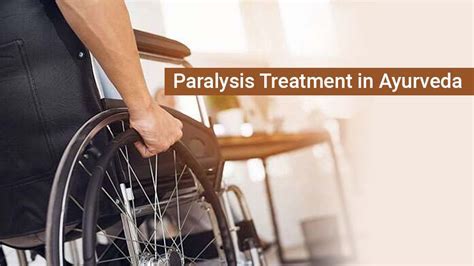Diseases

Ayurveda Paralysis Care
Paralysis is a serious condition that affects the ability to move and feel certain parts of the body. It can be caused by various factors, such as stroke, injury, infection, or disease. Paralysis can have a significant impact on the quality of life of the affected person and their family. However, there are some ways to treat paralysis and improve the chances of recovery.
One of the alternative systems of medicine that can help in treating paralysis is Ayurveda. Ayurveda is an ancient Indian system of medicine that believes in balancing the three doshas (Vata, Pitta, and Kapha) in the body to achieve health and wellness. According to Ayurveda, paralysis is mainly caused by an imbalance of Vata dosha, which governs the nervous system and movement. Therefore, Ayurvedic treatment for paralysis aims to restore the balance of Vata dosha and strengthen the nervous system.
Ayurvedic treatment for paralysis may include the following methods:
- **Diet**: A Vata-pacifying diet is recommended for paralysis patients. This means eating light, warm, moist, and nourishing foods that are easy to digest and avoid dry, cold, hard, and spicy foods that aggravate Vata dosha. Some examples of Vata-pacifying foods are rice, wheat, milk, ghee, butter, cheese, eggs, nuts, seeds, fruits, vegetables, and herbs like ginger, cardamom, cinnamon, fennel, and basil¹.
- **Massage**: Massage therapy is one of the most beneficial Ayurvedic treatments for paralysis. It involves applying warm herbal oils on the affected parts of the body and gently massaging them to improve blood circulation, relax muscles, reduce pain and stiffness, and stimulate nerve endings. Some of the oils used for massage are sesame oil, mustard oil, almond oil, ashwagandha oil, bala oil, and mahanarayan oil¹².
- **Panchakarma**: Panchakarma is a detoxification process that aims to cleanse the body of toxins and impurities that cause disease. It consists of five procedures: Vamana (emesis), Virechana (purgation), Basti (enema), Nasya (nasal administration), and Raktamokshana (bloodletting). Depending on the type and severity of paralysis, one or more of these procedures may be performed under the supervision of an Ayurvedic doctor¹³.
- **Medication**: Ayurvedic medication for paralysis may include oral or topical administration of herbal formulations that have anti-inflammatory, analgesic, neuroprotective, and rejuvenating properties. Some of the common Ayurvedic medicines for paralysis are Rasnadi kwath (decoction), Medicated castor oil (laxative), Pippali mula (long pepper root), Vatavidhwamsana rasa (mercurial compound), Chopchini churna (China root powder), Ashwagandha churna (winter cherry powder), Brihat vata chintamani rasa (gemstone compound), Rasaraja (mercurial compound), etc².
- **Yoga**: Yoga is a holistic practice that involves physical postures, breathing exercises, meditation, and relaxation techniques. Yoga can help in improving the flexibility, strength, coordination, balance, and endurance of the paralyzed muscles and joints. It can also help in reducing stress, anxiety, depression, and negative emotions that may affect the recovery process. Some of the yoga poses that can be beneficial for paralysis patients are Tadasana (mountain pose), Trikonasana (triangle pose), Bhujangasana (cobra pose), Shalabhasana (locust pose), Dhanurasana (bow pose), etc¹.
These are some of the ways that Ayurveda can help in treating paralysis. It is advisable to consult a qualified Ayurvedic doctor before starting any Ayurvedic treatment for paralysis. Also, it is essential to follow the doctor's instructions carefully and regularly monitor the progress and improvement. Ayurvedic treatment for paralysis may take time and patience but can offer hope and healing to those who suffer from this condition.
